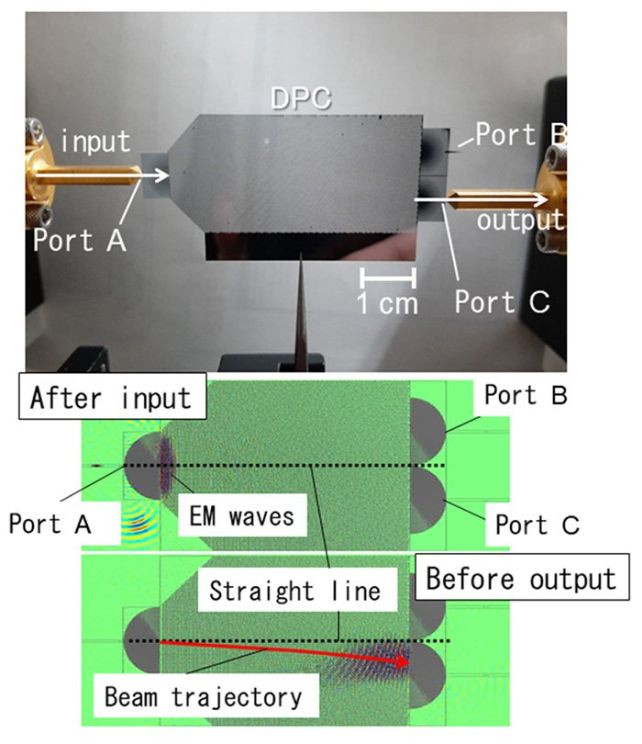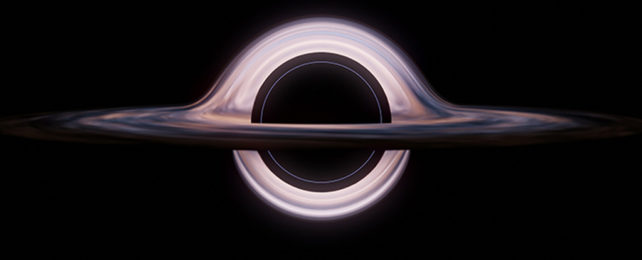Physicists distorted a type of material known as a photonic crystal to divert the path of light much as it would passing through a gravitational field, as described by Einstein's general theory of relativity.
The result, according to a team led by electronics engineer Kanji Nanjyo of Kyoto Institute of Technology, has implications for the control of light, especially as it pertains to optics and communications technology.
"We set out to explore whether lattice distortion in photonic crystals can produce pseudogravity effects," explains Professor Kyoko Kitamura from Tohoku University.
"Much like gravity bends the trajectory of objects, we came up with a means to bend light within certain materials."
In theory, any object with mass should affect the path of light. We can see this affect when we gaze out into the cosmos, as gargantuym objects like galaxies and galaxy clusters curve space-time so pronouncedly that any light traveling through it becomes smeared and distorted.
As objects shrink in mass, gravity's weakness becomes ever more apparent, with its warping effects becoming harder to observe.
Scientists thought that they might be able to replicate the effect on a smaller scale using photonic crystals. These are highly ordered and repetitive nanostructures in which the refractive index of light changes periodically, producing an iridescent effect; examples in nature include opals, peacock feathers, and the shimmering wings of butterflies.

These crystals are relatively easy to create artificially by arranging two different materials that interact with light differently. Scientists have noted before that the crystals could themselves serve as an analogy for space-time, their structures representing a path known as a geodesic. As light passes through its structure, its normally straight path can be made to deviate much as light can bend through space in what is described as a kind of pseudogravity.
The researchers set out to try and create and manipulate photonic crystal pseudogravity by distorting their photonic crystals experimentally. They created silicon photonic crystals, and introduced distortion by deforming the spacing between the ordered elements.
This altered the way the crystal interacted with light, producing a curved beam – like the passage of light around a tiny black hole.
Experiments in which they passed a beam through the crystal and observed how and where it emerged validated the team's efforts. This could aid in the study of gravity – a phenomenon we still don't fully understand – but also has implications for technology development, the team says.
"Such in-plane beam steering within the terahertz range could be harnessed in 6G communication," says physicist Masayuki Fujita of Osaka University.
"Academically, the findings show that photonic crystals could harness gravitational effects, opening new pathways within the field of graviton physics."
The research has been published in Physical Review A.
